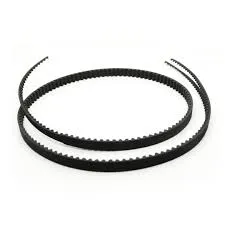- Arabic
- French
- Russian
- Spanish
- Portuguese
- Turkish
- Armenian
- English
- Albanian
- Amharic
- Azerbaijani
- Basque
- Belarusian
- Bengali
- Bosnian
- Bulgarian
- Catalan
- Cebuano
- Corsican
- Croatian
- Czech
- Danish
- Dutch
- Afrikaans
- Esperanto
- Estonian
- Finnish
- Frisian
- Galician
- Georgian
- German
- Greek
- Gujarati
- Haitian Creole
- hausa
- hawaiian
- Hebrew
- Hindi
- Miao
- Hungarian
- Icelandic
- igbo
- Indonesian
- irish
- Italian
- Japanese
- Javanese
- Kannada
- kazakh
- Khmer
- Rwandese
- Korean
- Kurdish
- Kyrgyz
- Lao
- Latin
- Latvian
- Lithuanian
- Luxembourgish
- Macedonian
- Malgashi
- Malay
- Malayalam
- Maltese
- Maori
- Marathi
- Mongolian
- Myanmar
- Nepali
- Norwegian
- Norwegian
- Occitan
- Pashto
- Persian
- Polish
- Punjabi
- Romanian
- Samoan
- Scottish Gaelic
- Serbian
- Sesotho
- Shona
- Sindhi
- Sinhala
- Slovak
- Slovenian
- Somali
- Sundanese
- Swahili
- Swedish
- Tagalog
- Tajik
- Tamil
- Tatar
- Telugu
- Thai
- Turkmen
- Ukrainian
- Urdu
- Uighur
- Uzbek
- Vietnamese
- Welsh
- Bantu
- Yiddish
- Yoruba
- Zulu
Dec . 01, 2024 01:05 Back to list
Understanding the Benefits and Applications of Narrow V-Belts in Industrial Machinery
The Narrow V-Belt A Key Component in Power Transmission
In the intricate world of mechanical engineering, power transmission plays a critical role in ensuring the efficiency and performance of various machinery and equipment. Among the many components used for this purpose, the narrow V-belt stands out as a reliable, versatile solution in a broad array of applications. This article will delve into the significance, benefits, applications, and maintenance considerations pertaining to narrow V-belts.
What is a Narrow V-Belt?
A narrow V-belt is a type of belt characterized by its wedge-shaped cross-section. This design allows the belt to fit snugly in the grooves of pulleys, generating high friction and enabling effective power transmission. The narrow dimensions of this belt type make it suitable for applications requiring precision and compactness. Unlike traditional flat belts, V-belts are engineered to provide enhanced grip and durability, making them essential in various industrial settings.
Benefits of Narrow V-Belts
1. High Efficiency The design of narrow V-belts allows for minimal slippage against pulleys, resulting in higher efficiency in power transfer. This means that more of the engine's power is effectively utilized, translating to better performance in machinery.
2. Compact Design As the narrow V-belt occupies less space compared to other types of belts, it allows for more compact machinery designs. This makes it easier to integrate into tight spots without sacrificing functionality.
3. Versatile Applications Narrow V-belts are used across numerous sectors, including automotive, agricultural, and industrial machinery. Their adaptability to various conditions and loads makes them valuable in diverse applications, such as conveyor systems, pumps, and fans.
4. Reduced Wear and Tear The improved material used in manufacturing narrow V-belts leads to greater resistance against wear and fatigue. This enhances the lifespan of the belt, leading to reduced maintenance costs and downtime.
5. Easy Installation and Replacement Installing or replacing a narrow V-belt is generally straightforward and can often be done with minimal tools. This ease of maintenance is a significant advantage for industries that rely on uptime and efficiency.
Applications of Narrow V-Belts
Narrow V-belts are found in a wide range of applications
narrow v-belt

- Automotive Engines They are commonly used in automotive applications for driving alternators, water pumps, and air conditioning compressors. The reliability and efficiency of narrow V-belts make them indispensable in vehicles.
- Manufacturing Equipment In factories, narrow V-belts power various types of machinery, including conveyor belts and production lines, ensuring smooth operation and controlling the speed of the systems.
- HVAC Systems Narrow V-belts are utilized in heating, ventilation, and air conditioning systems to drive fans and pumps, contributing to the efficient distribution of air and cooling.
- Agricultural Machinery Devices such as tractors and harvesters employ narrow V-belts to drive equipment like blades and pumps, highlighting their adaptability in rugged environments.
Maintenance Considerations
While narrow V-belts are built to last, they still require regular maintenance to ensure optimal performance. Here are some essential tips
1. Regular Inspection Routine checks for signs of wear, such as cracks, fraying, or glazing, can help identify issues before they lead to belt failure.
2. Proper Tensioning Maintaining the correct tension is crucial. A belt that is too loose can lead to slippage, while one that is too tight can cause premature wear on both the belt and the pulleys.
3. Alignment Checks Misalignment of pulleys can cause uneven wear on the belt and should be corrected promptly to extend the belt's lifespan.
4. Cleanliness Keeping the pulleys and belt free from contaminants like oil, grease, and dirt is vital. Such substances can lead to slippage and reduced efficiency.
Conclusion
Narrow V-belts are a fundamental component in the realm of power transmission, offering a blend of efficiency, versatility, and ease of maintenance. Their application spans various industries, from automotive to manufacturing, making them an invaluable asset in engineering and machinery. Through regular maintenance and proper installation, these belts can ensure optimal performance and longevity, cementing their status as a key player in mechanical systems. As we continue to innovate and enhance engineering solutions, narrow V-belts will undoubtedly remain a staple in power transmission technology.
-
Top Timing Belt Supplier | Quality & Affordable Prices
NewsAug.12,2025
-
Flat Drive Belts for Sale – Durable & High Performance
NewsAug.11,2025
-
Precise Timing Belt Operation: Function & FAQ Guide
NewsAug.10,2025
-
Precision Double-Sided Toothed Endless Flat Drive Belts
NewsAug.09,2025
-
Durable Tooth Belts: Precision Power for Poly V Belt Drives
NewsAug.08,2025
-
Reliable Diesel Engine Belts & Tensioners for Optimal Performance
NewsAug.07,2025

